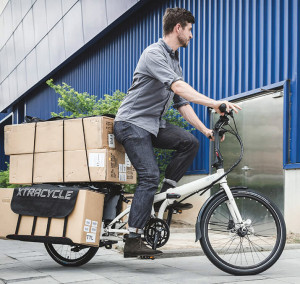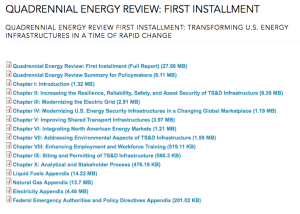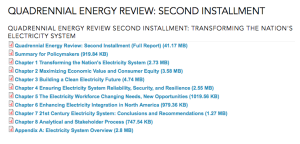Peter Lobner
There has been increasing interest in the U.S. in cargo bicycles for making pickups and deliveries, particularly in inner cities with high traffic volumes and limited parking. Human or electric-powered cargo bicycles offer obvious environmental advantages over traditional, much larger gas or diesel powered delivery vehicles.
In February 2017 IKEA will be introducing a multifunctional, affordable, “city bike” called the Sladda. In addition to IKEA’s own interpretation of conventional bicycle features, the Sladda can be equipped with a variety of cargo carriers:
- Front basket that’s rated at 10 kg (22 pounds)
- Rear rack that’s rated at 25 kg (55 pounds)
- Clip-on pannier (bicycle bag), which requires rear rack and converts into a backpack
- Trailer that’s rated to haul 49 kg (108 pounds).
The rated load of the bicycle itself is 160 kg (352 pounds), including the weight of rider.
Sladda configured as a cargo bicycle. Source: IKEA
You’ll find details on the Sladda on the IKEA website at the following link:
Xtracycle offer the Cargo Node and Edgerunner cargo bicycles. The folding Cargo Node, shown below, has a 159 kg (350 pound) carrying capacity, including the weight of the rider. The Edgerunner is a non-folding bicycle with a 182 kg (400 pound) carrying capacity. Both can be configured with a variety of racks. You’ll find more information at the following link:
Cargo bicycles may be trending in the U.S., but they have been used for many decades in Europe, particularly in Scandinavian countries, and they probably have been used just as long in Asia.
On a recent trip to China and Cambodia I found that 2- and 3-wheel cargo bicycles were very common and some were capable of carrying impressive loads. It seemed the concept of “rated load” never was an issue. Also common in China and Cambodia were 3-wheel cargo scooters and a range of small cargo vehicles that were part motorcycle and part truck. These small cargo vehicles seemed well suited for use in very high volume, relatively slow moving city traffic. Following are photos of several of the cargo bicycles, scooters and motorcycles I saw on the trip.
The cargo bicycles offered by IKEA and Xtracycle are nice, but they really don’t break new ground in the use of bicycles as cargo carriers. What is new is that individuals and businesses in the U.S. are expressing increasing interest in cargo bicycles, and other forms of small urban delivery vehicles. Next time you’re stuck in city traffic, you may be passed by a cargo bicycle in the bike lane.
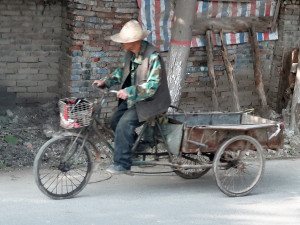 Basic cargo bicycle in Xi’an, China
Basic cargo bicycle in Xi’an, China
 Street sweeper’s cargo bicycle in Xi’an, China
Street sweeper’s cargo bicycle in Xi’an, China
 Heavy cargo bicycle in Xi’an, China
Heavy cargo bicycle in Xi’an, China
 Loading an electric cargo scooter in Beijing, China
Loading an electric cargo scooter in Beijing, China
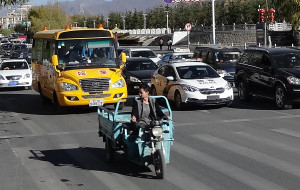 Cargo scooter in traffic in Lhasa, Tibet
Cargo scooter in traffic in Lhasa, Tibet
 Electric cargo scooter/truck with a large volume load in Beijing, China
Electric cargo scooter/truck with a large volume load in Beijing, China

